In the Studio: DjRUM
Detailed studio conversations with Felix Manuel.
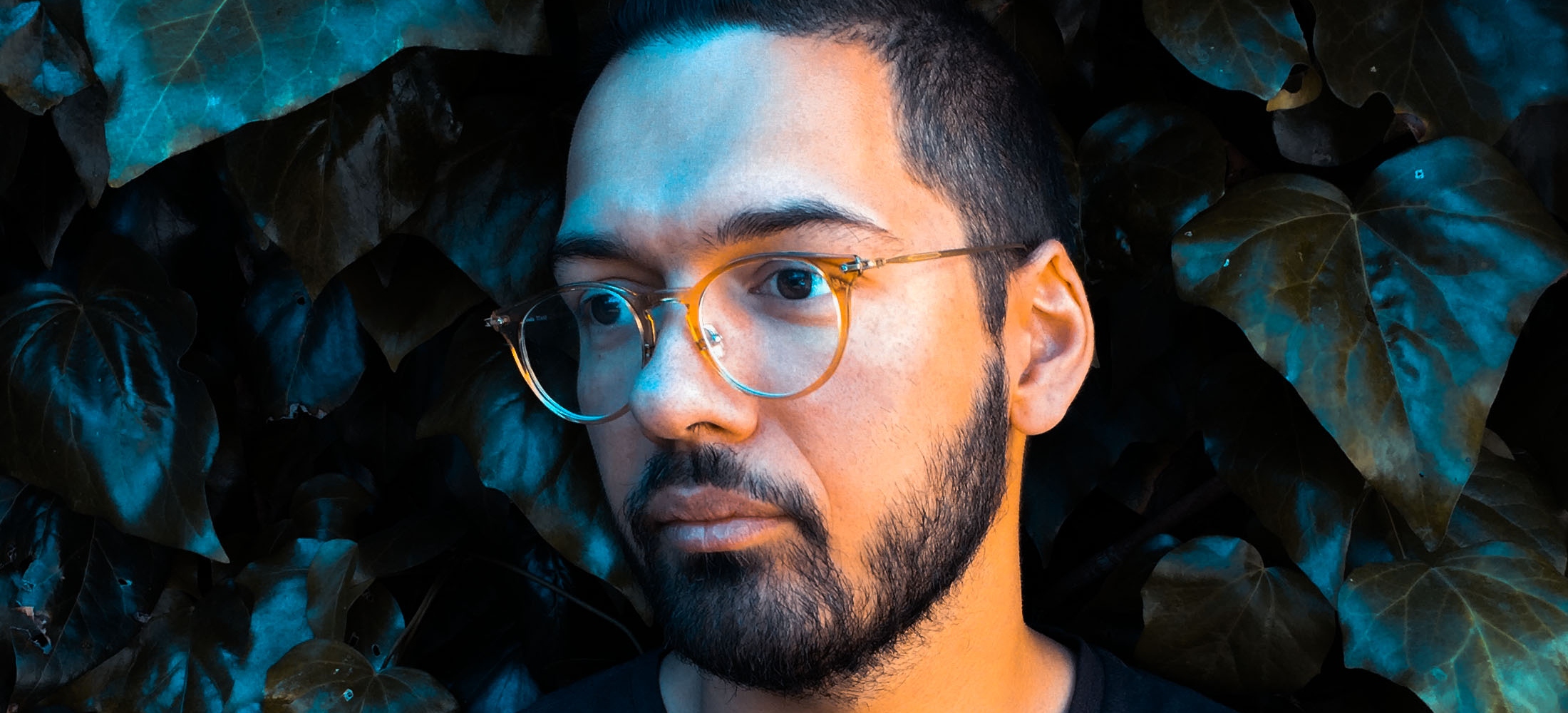
In the Studio: DjRUM
Detailed studio conversations with Felix Manuel.
Those who know DjRUM tend to love DjRUM. The UK artist, real name Felix Manuel—a recent signee to R&S Records—has historically distanced himself from media; notoriously shy, he keeps himself to himself while maintaining a consistent stream of meticulously produced work that employs cinematic atmospheres to blur the line between euphoria and a deep melancholy. Words like “exceptional” and “unique” are so frequently over-used in modern music journalism, but few could deny that Manuel is deserving of their application.
But you wouldn’t know this if you met him. Manuel, tall with short brown hair and an inviting smile, offers a tour of his Oxford home, before directing me to the piano that formed the foundation for his latest album, Portrait With Firewood. The instrument, large and slightly weathered—and a little out of tune (Manuel insists he likes the “soft” sound)—sits aside the door to his dark basement studio space. Based on these lighthearted exchanges, you’d have no idea that Manuel makes the gloomy, atmospheric music that he does.
Manuel was a DJ long before he became a producer. He began by mixing jazz and jazz-sampling hip-hop, also pushing high-octane cuts as part of the Yardcore crew, before making his production debut in 2010 with the gorgeously laid-back Plead With Me / Emerald (The Antidote) via Smokin’ Sessions. Like all that has come after—barring, perhaps, Manuel’s most recent ouput—the release was heavily sample-based (some of his tracks are made only from samples) and was almost impossible to classify into any genre. “Plead With Me,” like much of Manuel’s work, sits at the crossroads of downtempo electronica, dubstep, hip-hop, jungle, and techno, among others. Manuel’s works tend to be long and encompass rich textures and an array of weird and wonderful ideas. I think it’s because I am trying to be everything. And I am also a bit restless,” he says. “Mountains Pt.1” and “St. Martins” are particularly brilliant, as is “Untitled 9,” but everyone is likely to have their favourites.
Portrait With Firewood, however, is a little bit different. R&S Records, the label behind the album, describes it as Manuel’s “most personal” record to date, the product of an emotionally turbulent 2017. It sees the UK producer experimenting with a hardware synth for the first time and work with a vocalist and cellist; meanwhile, while samples are used for textures and percussion, it is the piano that sits at the basis for much of the music. “Sitting and playing piano, I would reflect on certain things, sort of meditatively, and that would inform the music,” Manuel explains. “That’s where the emotional complexity comes from.” To learn more about the music and the processes behind it, XLR8R visited Manuel in his Oxford studio.
The album is largely different to what has come before, in that it references your jazz heritage much more. Can you talk to me about the concept behind the album, and how it evolved over time?
I’ve known for a while that I’ve wanted to do another album and that I wanted it to be different to what I’ve done before. In 2016 I released three EPs in the same summer on 2nd Drop, which is an album’s worth of material, and I sent it to them all in one go and was like, “Here is the stuff, but don’t release it as an album,” because it just felt like a collection of tunes. I could have turned it into something more cohesive and called it an album but it just wasn’t conceived as one, and that’s not what I wanted my second album to be. I liked all the material but it felt like more of what I’d been doing for a few albums rather than something new. Albums are benchmarks for any artist so I wanted to show an evolution.
There are sections of these EPs that do sound like the album—particularly Forgetting, which has quite a lot of piano work.
That’s true, but that’s all programmed piano. I guess that was the beginnings of me moving in this new direction; I wasn’t satisfied with programmed piano so I bought a piano and got back into playing it again. It took a year or so before I felt confident enough to record some, and the process just built from that. Once I started recording the piano, with “Waters Rising,” the first track, I felt that my idea to use the piano as the basis for the album solidified; I felt like I wanted more. That was the starting point. I knew I wanted a cellist and I knew I wanted some live percussion. I had it in my head for some time but I wasn’t convinced until I actually started doing it.
How long have you been playing the piano for?
I’ve been playing the piano for a while, since I was a kid. But when I left home, around the age of 18, I left playing the piano behind. Keyboards are not the same, I’ve never liked them. I’d never sit there playing the keyboard for three hours like I do on my upright piano.
I read a quote where you spoke about your lack of musical knowledge in electronic production. Do you perceive your limitations as an advantage?
I do. I think that is the essence of experimental music: trying something and seeing what comes out. It’s about the process rather than going into the studio with a clear preconceived idea of what you’re going to make. That’s not experimental, in my mind. Or maybe that’s having a vision? Perhaps I’m just envious.
What do you think made you want to go back to your jazz roots with this album?
Part of it was this craving to be more original. I have to be more myself. Everyone is different and in order to show your own personal “uniqueness,” you need to bring everything, or as many things as you can, about yourself into it. Through the years, I’ve felt that certain sides of me haven’t been able to come out. For example, the drum & bass scene was always insular and purist; if it wasn’t proper drum & bass then the music wouldn’t be heard. Being around that gives you the mentality that you have to do something a certain way, to fit a mould. It becomes a set of guidelines. I’ve felt like I had to pretend that some of what I listen to wasn’t part of my life, and now I’ve realised that I want to bring it all in—go back to where it started and put that into my music. That, I think, is what’s going to make it original but I’ve always been scared to fully do that—scared to really expose myself as an artist.
It’s interesting because your music has never been easy to pigeonhole—anything but formulaic. The genre itself can change several times even in a single track.
Yes, that’s true. I think it’s because I am trying to be everything. And I am also a bit restless.
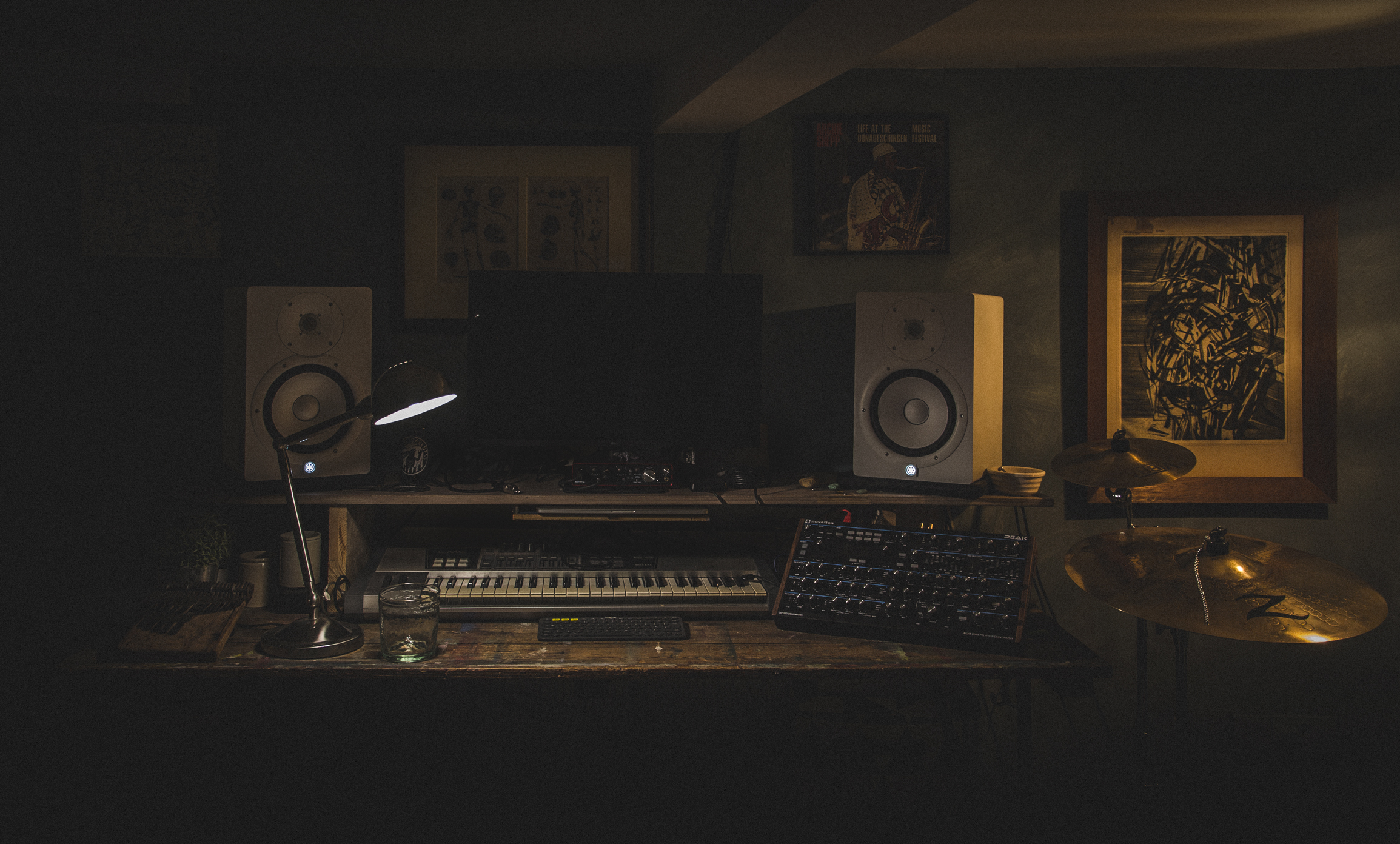
You’ve spoken previously about your heavy use of samples. On earlier tracks like “Mountains,” it feels like these samples guided the track—but this feels less so on the on the new album. Why is this?
Yes, that’s the big difference between this new album and my earlier work. I started to realise that if I am going to be sampling less, do I make simpler tunes? Or do I make tunes more about the programming, or more synth-based? That was another thought. I could make tunes that are very percussive, or where the basis for the tune is the rhythmic structures. When I started doing piano stuff, I realised that something that has been stopping me from using the piano is that as a pianist I’ve only ever been good at playing by myself. Actually, playing along to something I’d already made on the computer wasn’t something that came naturally to me—at first, that’s what I tried to do. I’d make a riff or a loop on the computer then try to play along to it but it wasn’t fruitful. So instead I started to just sit there and play and hit record. I have contact mics connected to the soundboard rather than having a studio setup so any moment I can just go. It meant that I got really natural performances and my shyness was kind of taken away.
And then did you just sample the piano?
Yes, the same process. I’d take big long improvisations, sometimes around an hour long, and then I’d pick out bits and make something out of that. The samples became the foundations for the tracks.
I read somewhere that the album is a lot more about emotion rather than the process. Is this connected to the piano?
Yes, the emotional content led it. Sitting and playing piano, I would reflect on certain things, sort of meditatively, and that would inform the music. That’s where the emotional complexity comes from.
Speaking more generally, do you find music writing to be a cathartic process? I read an interview where you spoke about music allowing you to communicate things you cannot put into words.
Definitely. There are two sides to it. One of them is this mediative escapism whereby you’re inhabiting this realm that is so shut off from the outside world. It’s a medium of realising a fantasy, like young boys making gangster music. For me, there is an element of this for me; I enjoy that feeling of being so blinkered, concentrating so hard on something. There’s something so beautiful about this: the most important thing to me at this little moment is that one little hi-hat. I’ve always done that, but what was different this time was trying to open up emotionally. I have been overwhelmed by how many people seem to have understood what I am trying to say, even those not close to me.
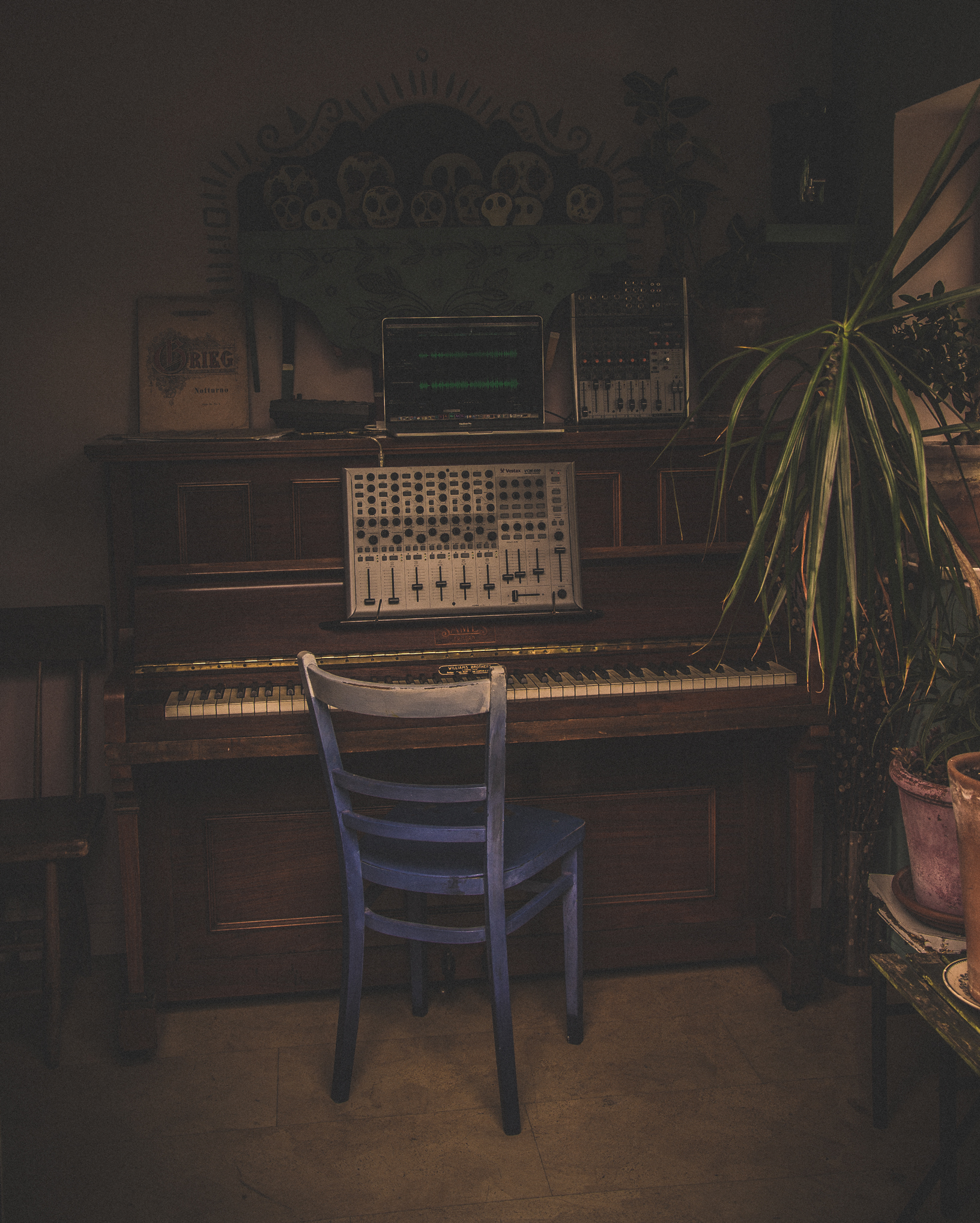
Looping back, how did you build on these piano foundations—with samples?
Generally, once I had the initial chords, I realised that I wanted some extra bits so I did some improvisations around those chords, and then the tune took a lot more structure. Then the samples came into play as I looked to add more textures and layers. With “Waters Rising,” for example, some of the drum sounds come from other records or from sample packs.
I read somewhere that you used over 37 samples in 2013’s “Darkest Hour” alone. I think you called it “micro-sampling.” Are samples far less prominent on this new album?
Ha! Ye, I counted for that track, and I’ve actually sampled more in other tunes. I’ve even made full tracks out of samples alone. I have continued to micro-sample for textures and percussion, although certainly not as much as before. Samples were not used as a basis for any tracks on Portrait With Firewood.
Why did you decide to use fewer samples on this record?
There are really two reasons. Firstly, and this is kind of silly, I’ve found that there are two sides to my listening. One is listening for records to DJ with, and that’s like new releases, looking for interesting, forward-thinking music, like digging for old jungle and rave. That’s one side of me. And then there is going to car-boot sales and charity shops and picking up all that kind of stuff, and trawling through Youtube and Discogs—crate-digging digitally, and looking for samples. With this album, I found myself having much less time to spend doing deep crate digging like I used to, so my sample bank was not what it used to be. At the time when I was sampling a lot, I was able to do that because I was listening to so much, and I was able to think, “I need a conga,” and identify the exact record to get it from. I just always had my ear open and could recognise what I needed and where I got it from, so I was using samples more. I still do, and I have a list on my phone of sounds I like from certain tracks I hear on the radio or anywhere.
What’s the other reason?
Oh, the other reason is really just that I wanted to make the album cohesive by sticking to a restricted sound palette of a few key instruments.
Do you actually make a sample bank by recording samples and saving them? Or is your process less rigid?
No, I don’t, but I know others do. Sometimes, when I go on big digging trips, I will come back with loads of good jazz records, and it will take me forever to get to know those records to the point where I can be like, “Oh, there’s a really nice chord on track three.” That takes me too long. In these scenarios, I will have sessions of listening to them and recording bits that I like. I only do this on big trips. Otherwise, it’s just getting to know a record. The best way for me to find a sample is to know it in a tune because I’ve got to know the record. I think it’s more genuine in that way. Although the sample bank does sound wicked.
So how do you file these samples?
I’ll have a folder titled “Chicago” after a trip to Chicago, and so these samples are normally named by the city. On my phone, it’s just stuff I’ve heard on the radio or speaking to someone. It’s just a continual process. Like, “snare” in “Be My Baby.” Right at the beginning, there is a wicked snare. Don’t use it now because I am going to use it sometime.
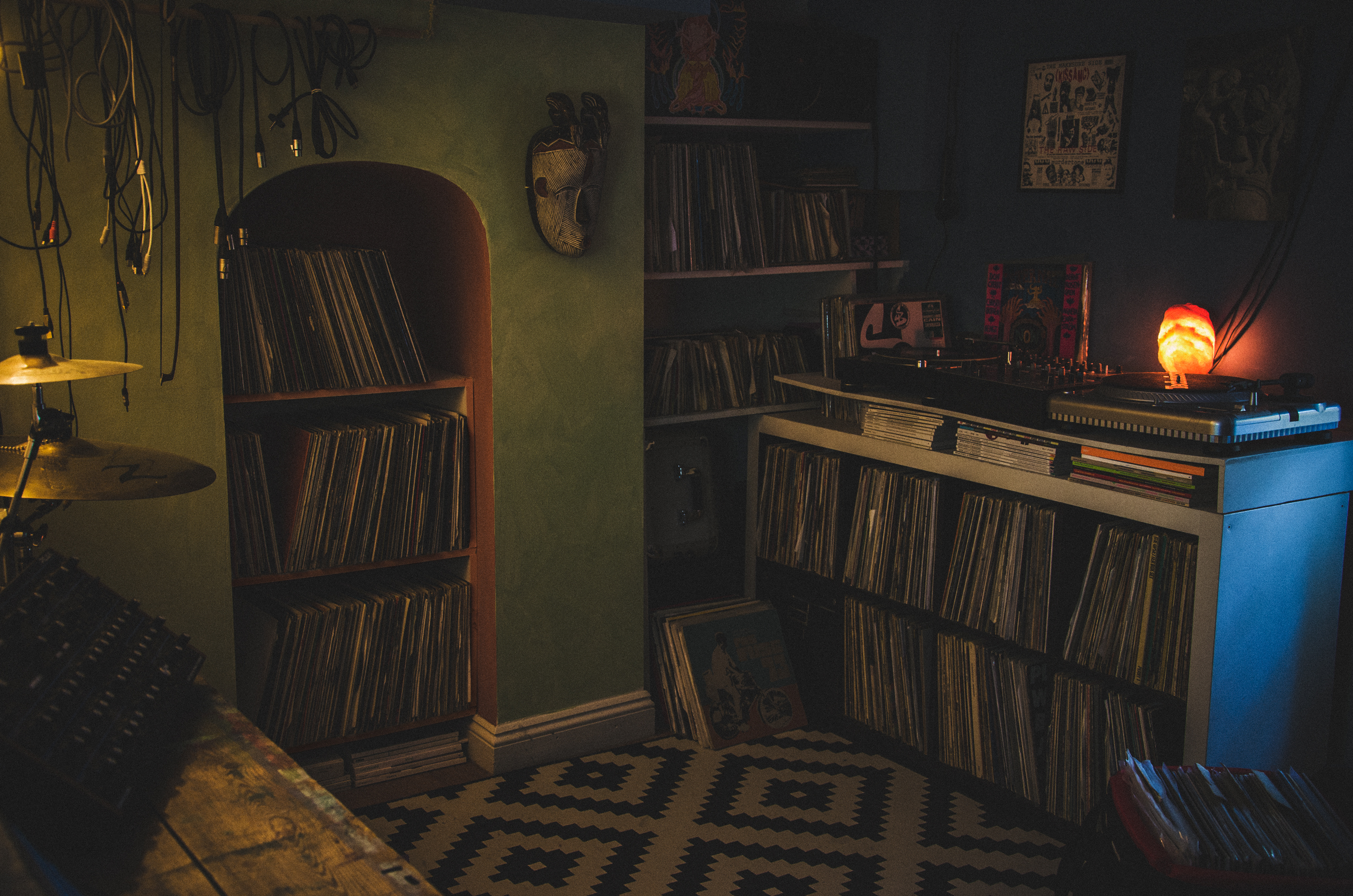
Zooming out a little, what’re your thoughts on sample packs?
I avoid them because I don’t find they don’t have the same grit as sampling from a record.
Is it also originality?
Yes, someone else could use that sample but they could also get that record. I don’t think the obscurity is a major part of my reasoning behind it. I think it’s the character. If you sample a shaker from a Bollywood track then it’s going to have this character. Bollywood records are always really distorted in a beautiful way. Vocals are always really distorted in this shrill way.
There’s also a sort of authenticity. I like the story that you’ve sampled something that was created by a person who had this whole life, and you’ve brought that in. It means that this track has so many stories behind it—so many albums. DJ Shadow talks about a record shop being a “pile of broken dreams,” and I love that. This album on the floor with dust on it—that was a big deal to someone. That was once someone’s dream. He was talking about how he is adding to the pile of broken dreams by making records.
As with your first album, Seven Lies, you worked with a vocalist on this latest LP. How do you find working with a vocalist compares to sampling vocals? How do you create the character here?
On Seven Lies, I had sampled vocals on some tracks and guest vocals on others, and I’m not sure that really worked so well. I’m not sure it was as cohesive as it could have been. So with the new album, I decided to have no sampled vocals and only work with one vocalist throughout. I worked with her vocals much like I would work with samples. She sent me loads of brilliant sketchy ideas, and I chopped them up and pieced them together. It can be hard to create the same atmospheres because there isn’t the same character with a vocal guest—because, as I said, sampling from different records adds character to the soundtrack, so what’s the character with guest vocals? But Lola [Empire] recorded all of her vocals on her phone and so what you end up with is a limitation that adds a character, I think. Everything comes in a bit compressed and there some distortion on certain frequencies. Those imperfections are the character.
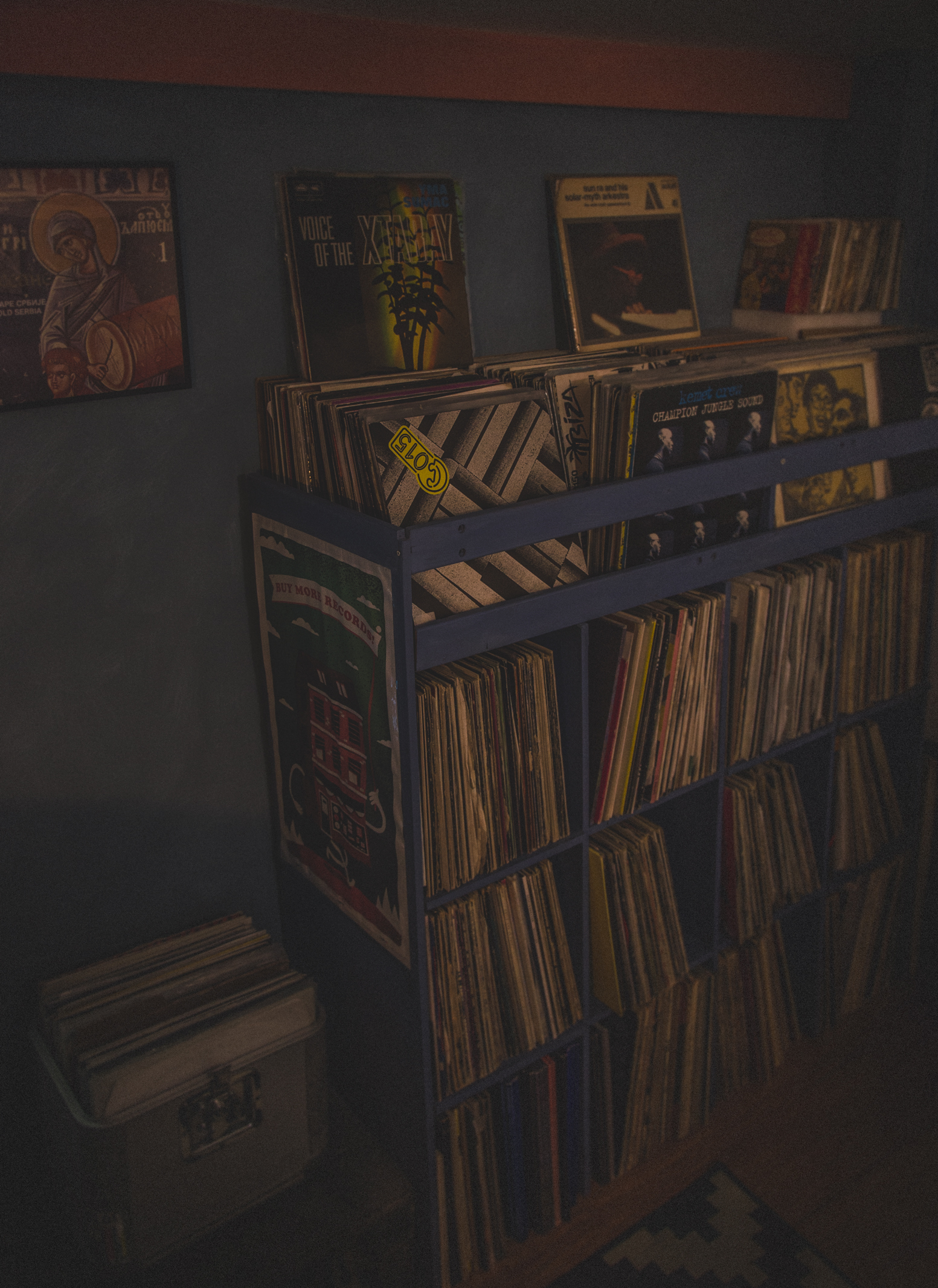
How quick are you at identifying what you require for a track?
I mull a lot. And this might be my art school training, but something we were very much taught to do was not to try things and see what it looks or sounds like. Don’t make a decision and go down that path; rather, try both things based on what’s best. I do a lot of that in my tunes. My sessions in Ableton end up with a version of the tune and then I’ll always copy and paste that, and do another version with a new combination. I’ll keep each on, trying new things, often taking the best bits from each version. Often, when people listen to my tunes they say there are so many ideas in it, and that’s partly due to this process: I’ve copied and pasted and not edited enough of the old version in the new version. And my beats evolve a lot in a track because that’s like four or five beats out of the 20 I made. Or if you hear a sound that comes into the tune once and never again, that might be a really important part of another version that I didn’t want to use a lot but didn’t want to lose it altogether.
Yes, I read another interview where you said you’d been working on “Watermark” for over a year and a half, and have had six or seven attempts at it.
That’s a perfect example. I really liked the harp sample. It felt special and I wanted to do it justice. I just wasn’t happy for ages. I needed to find the right recipe.
And when you release three parts of the same track, I assume these are just three different versions, right?
All of that, that’s because of this process, yes, where I’m trying different things. It generates loads of material that’s not being used, so I’ve made part one but there was that bit that was really good that didn’t make the final cut. I’ll go back to that good bit and that’ll then turn into another track. Sometimes I just feel I need to use all that material in some way. “Showreel” is another example of this. There’s something really special in it that I wanted to make the most of. It went through loads of iterations, and several years of just not being happy with it. I always felt that the melodic line deserved a better beat.
Does this also explain why your tracks are often quite long, sometimes around nine minutes?
Partly, but that’s normally not just because there are so many ideas. I am also into quite minimal music that develops slowly, so those developments in that nine-minute track could happen more quickly, and it would be a four-minute track that changes from one bar to the next, but I like that slow development. “Watermark” could have been 15 minutes. I’ve thought about doing a mix for someone where I deliver a track and give the tracklist of just all the people I’ve sampled in it. It’s a bit tongue in cheek but this is also what’s interesting for me.
If you have these seven or eight versions, how do you know when a track is done? How do you know you’ve got the right recipe?
I have to let the music settle for some considerable time. I sit on tunes for a long time. And I often don’t think it’s good enough. Often I’ll put tunes down when I’m in the middle of working on them because I need fresh ears. I’ll come back to them the next day, maybe two days, and often even a couple of months. I’ll also put a tune on my phone and listen to it on the bus. This helps me bring some spontaneity to it. Spontaneity is being in the moment of hearing a tune, and just having that feeling of what should come next. One way you get that spontaneity in programmed music is if you’re really in tune with what you’re listening to and you can just feel what needs to happen next. That comes from listening to it loads.
Would you call it perfectionism?
No, because I don’t believe in perfection. And I couldn’t strive for something like that. Whatever I am trying to do, it’s a process and trying to get it right is just seeing what works. And it’s just a feeling.
All this explains why your output is quite slow. It’s not often that you release more than two EPs a year.
Totally. It’s also because it takes so long before I have the confidence to send them to someone. Most of the time, when something comes out, it’s around two or three years old.
The album saw you experiment with field recordings and employ a hardware synthesizer for the first time. How did this change things?
Field records are quite minimal, but I didn’t use them how most people think of them. Often when people say field recordings people think of recording ambient nature sounds. For me, however, it’s more about sound design—about making a sound that I’ll turn into a shaker or something. With the synth, you can hear where I’ve used it. One of the reasons I’ve never used a hardware synth before is because I don’t know how to use them. I’m scared of them. I’ve long been using a software synth called Massive by Native Instruments, initially just to do simple sub-bass, then more complex bass sounds and eventually melodic sounds too. I just learned that one synthesiser very well, and that’s been enough.
It’s interesting that you’ve minimised the use of synthesisers so much.
It is. The synth has always been used to fit into an existing tune for which I need a certain sound that I need to use the synth to make. You get to the point where you need such a specific thing that you’re unlikely to find in a sample. Or you can try to make it? And that’s often the easier option.
So why the hardware synth?
I was already in the swing of the album and I just took the plunge because I wanted to try it. I used it as a basis for some of the tracks, like “Blue Violet.” It just started with this synth riff, and I built everything else around that. It’s a lot more conventional production in a way.
One of the things about your studio is the darkness of it. Is this on purpose?
I think so. I am often producing in the evening because there’s just a mood that’s right. I can feel it. It’s like a calmness. To get the album finished, I worked on it three or four months full-time day and night, but my studio is in the basement, so it’s always night-time in the studio.
I think this is felt in the atmosphere of the music you make.
I think that would be present wherever I am making music. In a way, when you produce music, you’re not capturing a moment. Yes, in the improvisations, you’re capturing a moment, but the end result is very fine-tuned and heavily produced over lots of sessions. In a way, when you produce programmed music, you’re not capturing a moment. I think that would be present wherever I am making music.
So where does the darkness in your music originate from? How do you create this mood?
I think the mood just comes from my personality. The music is really melancholic. I don’t think that aspect of my personality comes across in meetings like today, or even to people who know me. I have a façade that protects me but I’m inwardly quite dark; I’m really quite emotional and fragile. There’s a lot of inner torment that I don’t show to people. I don’t behave like that out and about. My music captures this side of my personality. When I realise that people pick up on it in my music, it makes me tremble.
It’s very beautiful.
Yes. When I think about beauty in music—when I think about the most beautiful music that I’ve heard—it’s never chirpy. The most beautiful music often has a spiritual or religious connection or is founded on love. People often talk about beauty in terms of aesthetic and then you start talking about perfection. But when I think about the most beautiful music, it’s the most soulful—the most emotionally charged. I don’t think it has anything to do with symmetry or perfection.
How much control do you have over what you make? Are you intending to make dancefloor tracks?
My tracks often start off with me trying to make one thing and end up as something else. I keep trying to make hip-hop tunes but they never end up that way. I’ll also often have a tune where I’ve started out with the drums and it’s going in the direction of a dancefloor track, and I’ll have this feeling that it needs some squeaky, swirly kind of psychedelic noise, and that’s going to really build the tension in this thumping dancefloor track. So I will start trying to make that noise, fail, and end up making a beautiful melodic ambient thing. Does it stay, and this track is no longer a thumping dancefloor track? Or do I combine the two and have an ambient track with a big beat? Or do I scrap the ambient thing I made and use it later? I often combine the two and the track ends up somewhere else.
It’s strange that you have such little control.
I try to. I really try. I would love to make another track like “Untitled 9,” that Ilian tape put out. I’ve tried to make a track like that but it just never works. I can’t push myself in a direction.
How many tracks are you working on at any given time?
Right now, I’ve got about six tracks going on.
Do you make lots of notes?
Not really. Only really mental notes. I get to a point in a track where I just have a list of things that I know need doing to it, that I’ve maybe left for a bit. This builds up and I might do that on the train, bus, or anywhere?
How do you balance this with your family life?
It’s hard. I become very frustrated when I can’t work on a tune. Because for a tune to work out, I need to become obsessed with it. Some tunes end up not going anywhere, but it probably is going somewhere and didn’t because I just didn’t get obsessed with it. Once I get obsessed with a piece it, I want to work on it all hours and that gets in the way of family life. I will take the laptop to the toilet just to get that tiny amount of time listening to it.

